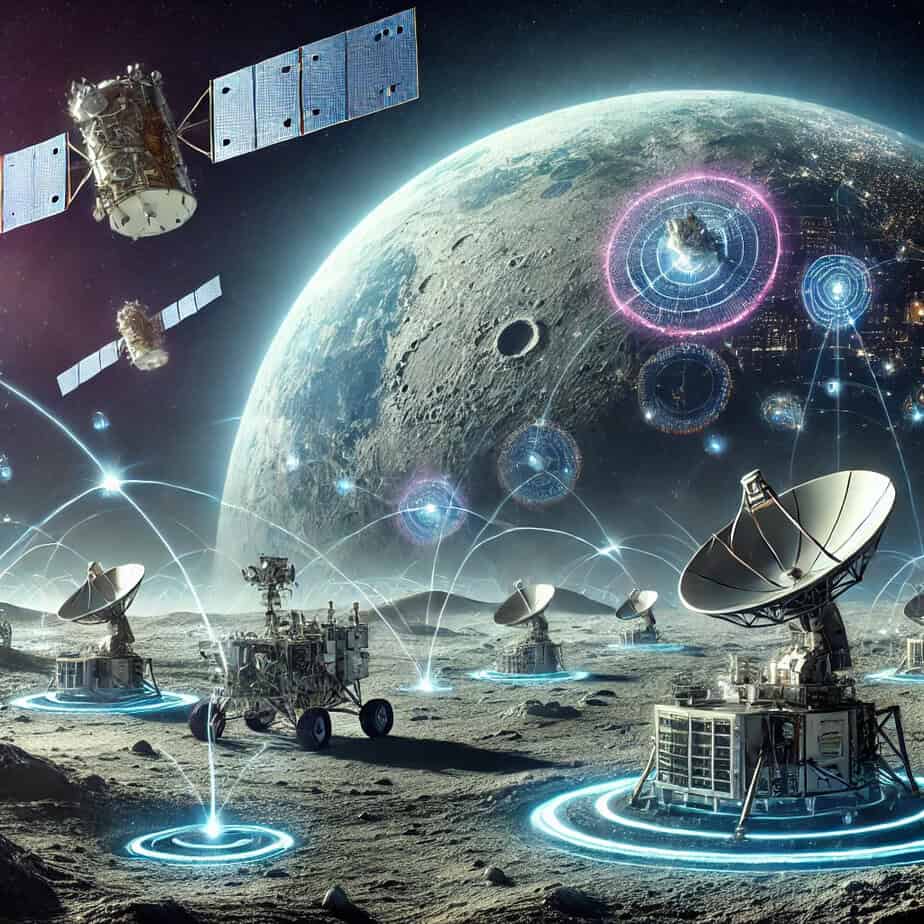ESA’s Moonlight Programme: A New Era of Lunar Communication and Navigation
At the International Astronautical Congress on October 15, the European Space Agency (ESA) officially launched its Moonlight Lunar Communications and Navigation Services (LCNS) programme. This ambitious initiative is set to develop crucial infrastructure that will support future lunar missions, providing essential communication and navigation capabilities. With over 400 lunar missions planned by space agencies and private companies in the next 20 years, the Moonlight programme is positioned to play a pivotal role in the success of these explorations.
What is the Moonlight Programme?
The Moonlight programme involves the deployment of a constellation of approximately five lunar satellites. These satellites will provide reliable, high-speed communications, precise autonomous landing capabilities, and improved surface mobility for lunar missions. The system will allow data transfer across vast distances, covering 400,000 kilometers (250,000 miles) between the Earth and the Moon.
This network will streamline operations for future lunar missions, eliminating the need for standalone communication systems, allowing teams to concentrate more on astronauts, robotics, and scientific exploration.
Supporting the Future of Lunar Exploration
Josef Aschbacher, Director General of the ESA, highlighted the importance of the Moonlight programme, describing it as a critical step toward supporting the future of the commercial lunar market and both ongoing and future lunar missions. The programme will begin with the launch of the Lunar Pathfinder—a communications relay satellite built by Surrey Satellite Technology LTD—scheduled for 2026.
The initial services of the Moonlight programme are expected to be operational by the end of 2028, with the full system becoming operational by 2030. The primary focus of the programme is to provide coverage at the Moon’s South Pole, a region of particular interest due to favorable lighting conditions and the potential presence of water ice in craters that remain in permanent shadow.
Global Collaboration in Space Exploration
The Moonlight programme also represents a broader collaboration between global space agencies. At a time when NASA’s Artemis programme aims to return astronauts to the Moon, the ESA is contributing to the Artemis Gateway project, further strengthening international efforts in space exploration. Europe also plans to land its Argonaut spacecraft on the Moon by 2031.
According to Javier Benedicto, ESA’s Director of Navigation, the recently signed Moonlight agreement lays the foundation for future lunar navigation systems, enhancing mission efficiency and safety around and on the Moon’s surface.
Partnerships with NASA, JAXA, and LunaNet
The Moonlight programme will involve various ESA directorates working alongside numerous international partners and private industries. A key advantage of the Moonlight communications infrastructure is its potential to reduce the reliance on standalone systems, allowing mission teams to focus more on the actual exploration tasks.
As part of this initiative, ESA is collaborating with NASA and Japan’s space agency, JAXA, on LunaNet—a framework aimed at standardizing communication and navigation systems for lunar missions. This collaboration will ensure seamless data transfer and connectivity between the Earth and the Moon.
Looking Beyond: Mars Exploration
ESA also hopes to leverage the technologies and insights gained from the Moonlight programme for future Mars missions. The agency is already planning the development of Mars Communication and Navigation Infrastructure (MARCONI), which will build on the Moonlight system to support human and robotic exploration of Mars in the future.
Conclusion
ESA’s Moonlight programme marks a bold step forward in lunar exploration, offering a comprehensive communication and navigation solution for the next generation of Moon missions. Through international collaboration, technological innovation, and long-term vision, the Moonlight programme is set to transform how we explore the lunar surface—and beyond.
With an eye on both the Moon and Mars, the ESA is paving the way for the future of space exploration, ensuring that humanity remains connected across the vast distances of space.
Thank you for reading. We hope this gives you a good understanding. Explore our Technology News blogs for more news related to the Technology front. AdvanceDataScience.Com has the latest in what matters in technology daily.



